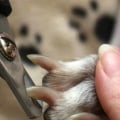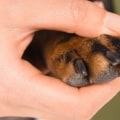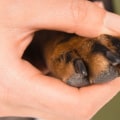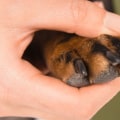Dogs need to cut their nails on a regular basis, approximately every 3-4 weeks; however, it is common for owners to wait too long between each cut, which can cause several health problems for the animal. For cats, routinely cutting their claws every 10 to 14 days will keep your pet healthy. Trimming your dog's nails frequently will cause them to be removed quickly and will allow the nails to be cut shorter. Basically, having long nails changes the way a dog behaves, which can damage their skeletal system.
Scissor or plier clippers can be used for both small and large dogs, but you might find it easier to use a nail clipper made specifically for cats or small dogs if you have a miniature dog. File your dog's nails is primarily done to remove any sharp tips or fragments that remain after you cut your dog's nails. A long nail causes the bones of the foot to flatten and the bones of the metacarpal, phalanx I and phalanx II to become more inclined each time the dog walks or stands up. While, on average, most dogs will need their nails cut every 1 to 2 months, it may be more frequently, even once a week, for older dogs.
Even if you have hard surfaces on the floor or concrete pads in the yard, an older dog that is losing mobility may spend most of the day resting on his dog bed and less time walking on these surfaces, which means you'll have to cut his nails more. For dogs with traction problems that can't be solved simply by trimming their nails, there are several solutions you can consider. Urban or suburban dogs that regularly walk on the sidewalk naturally grind their nails day after day, so they may not need to be trimmed frequently. If you have a large dog, it's helpful to have someone else hold him while you cut his nails.
In addition, long nails can make it difficult for your puppy to hold on well while walking on slippery floors, such as hardwood or tile, which can already be difficult for an older dog. Regardless of the length of your dog's nails, some dogs simply have a harder time getting traction on certain surfaces, such as tile, linoleum, and hardwood. Keep in mind that even if your older dog is still active and goes for a walk a lot if he walks on dirt or grass, his nails won't wear out as quickly as if he were walking on sidewalks or asphalt. So, if it's possible and practical to cut your dog's nails weekly or at least every two weeks, you'll probably get better results, have a much less stressed dog, and experience less stress in the process.
This occurs when the blood vessel is cut (which is called fast), and it occurs more often in dogs that twist a lot when they cut their nails, as well as in dogs with black nails, because it is easier to see the fast in dogs with clear nails.






